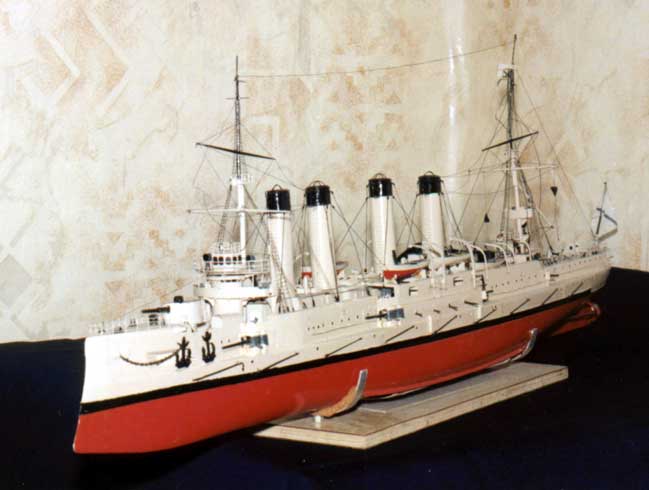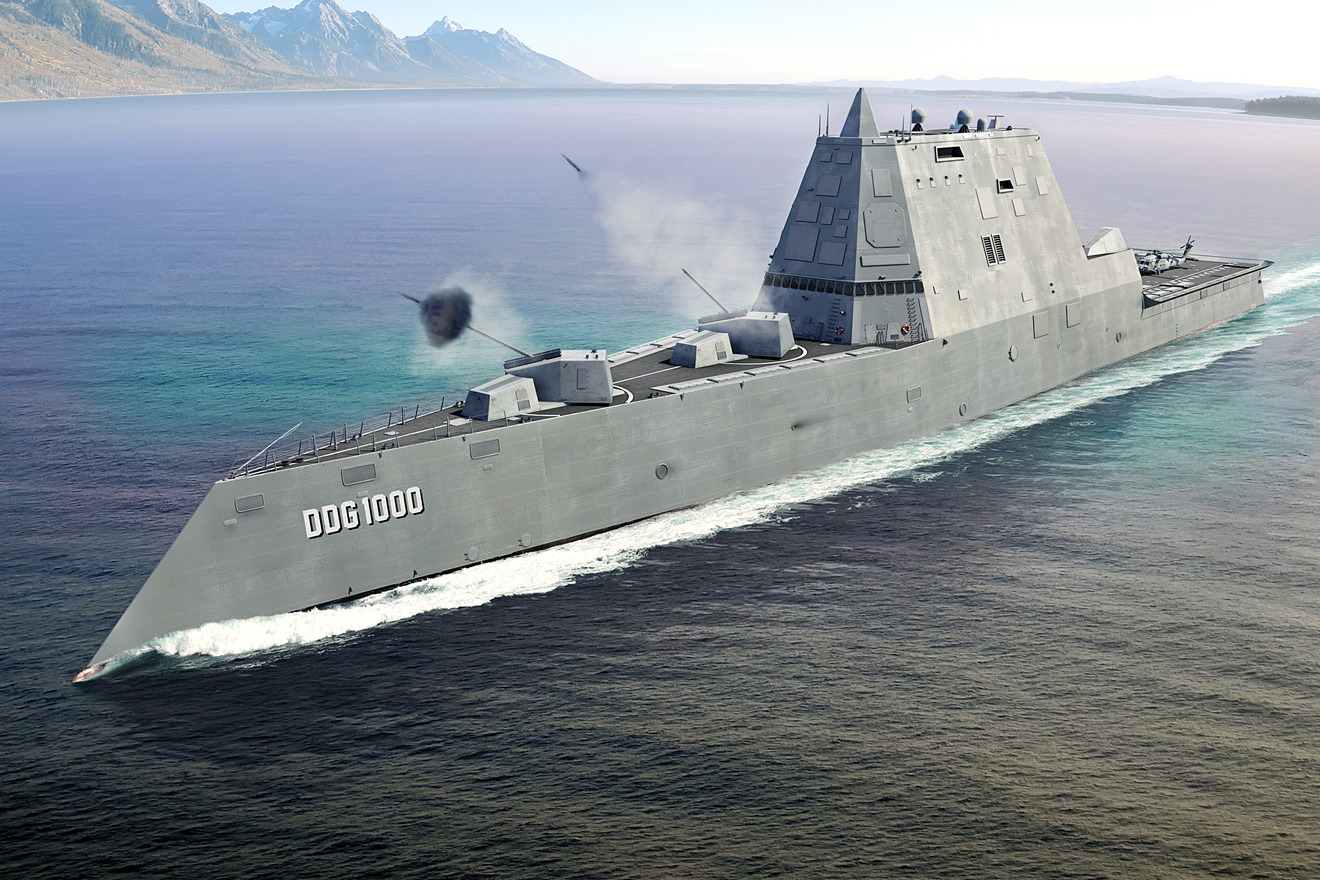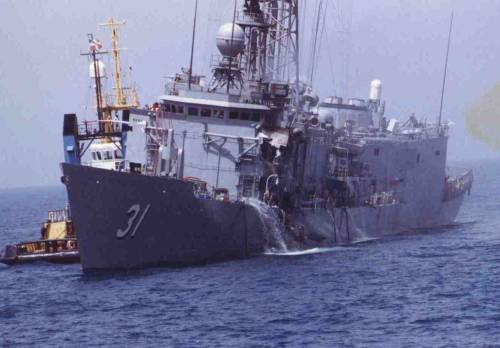Posted on
September 24, 2014 by
N.R.P

This is my first article which involves comparing major frontline warships. In this article I will compare the most powerful destroyers of the Chinese Navy and the India Navy, The Type-52D class and Kolkata class respectively. The reason I’m choosing to compare these two is because they are the newest destroyers of their respective nations and incorporate multifunction AESA radars and long range missiles with vertical launch capabilities. They pack a formidable punch but they have their strengths and weaknesses. These two ships will be the primary escorts of the Chinese Navy and Indian Navy carriers for years to come. They are game changers for their respective nations. All these will be discussed in detail in the comparison below. I am comparing only the most important aspects of each ship.
10 points have been allocated for each category and it will be totaled up at the end of the comparison. This is entirely my opinion and analysis and you are free to make your own analysis or suggestions in the comment section below as a good discussion is always appreciated.
DESIGN
Kolkata Class:
Photo © Livefist
The Kolkata follows the Soviet tradition of having an assortment of weapons at the bow on various raised platforms. It has a 163 m long hull which is retained from its predecessor, Delhi class. It displaces around 6700 tons when fully loaded. The massive size of the ship allows the installation of a wide range of sensors and weapons. The Indians have chosen to leave a lot of deck space for future additions and upgrades.
Type 52D:
This uses essentially the same hull as its predecessor, the Type-52C. Its hull is slightly smaller at 154 m, but it displaces around 7500 tons when fully loaded suggesting that it is packed to the brim with sensors and weapons and there is hardly any space left for additions of new systems.
ELECTRONIC SENSORS
Kolkata Class:

MF-STAR AESA radar
This is the first Indian warship to use an Active Electronically Scanned Array (AESA) radar, which has 4 static panels instead of a single rotating panel. This Multi-Function radar also allows for the replacement of a dozen other smaller search, track and fire control radars with a single system. The Israeli MF-STAR has been chosen for this role. It is mounted very high up on a specially built mast.
The MF-STAR operates in the S-band of radio frequency. It consists of 4 panels mounted on each side of the main mast. This radar is capable of performing a variety of functions like
- Long range surface surveillance
- Long range 3D air surveillance
- Gunnery control
- Target classification
- Simultaneous multi-engagement support
- Guidance for active and semi active missiles
These features make the INS Kolkata, the most advanced radar platform in the Indian Navy. The radar is said to be capable of guiding 24 missiles at once to hit 12 targets. This gives the ship an ability to defend itself against saturation air attacks depending on the number of available missiles. The MF-STAR is capable of detecting large aerial targets at distances >250 km and sea skimming cruise missiles at ranges >25 km. The actual values are much higher and are classified. Since Israel is one of the leading makers of radars, I will give them the benefit of doubt and award them with a high rating.

LW-08
Its secondary radar is a Thales LW-08 2D radar which operates in the D-Band. It’s a long range surveillnce radar and provides target indication to weapon control systems.
It scores
10/10 in this category
Type-52D:

Type-348 AESA
The primary radar, the Type-348, is similar in arrangement to the SPY-1 radars of the American AEGIS system. It is a dual band AESA which has 4 square panels mounted on 4 sides of the superstructure. This radar is said to have a range of 350 km and is primarily associated with the HQ-9 SAM. China claims that this radar has the capability to detect stealth fighters like the F-35, but i seriously doubt this claim.

Type 517 radar
The secondary radar on board is the Type-517 A-band VHF air search radar. The biggest problem is that, details of new Chinese radars aren’t available anywhere. But their radars, though powerful, aren’t on par with the western radars.
It scores
8/10 in this category.
WEAPONS
Both these ships rely mainly on vertically launched missiles as their primary weapon and guns as their secondary weapon. The Type52D possesses a Universal Vertical Launcher system with 64 cells which can fire any type of missile from Surface to Air, Surface to Surface to Anti-Submarine missiles. The Kolkata meanwhile makes use of a fixed missile launch VLS which can launch only one type of missile.
Kolkata Class:

16 BrahMos VLS and a 76 mm gun
India has chosen to make this class excel in surface warfare. Its main armament is a battery of 16 vertically launched BrahMos supersonic long range Anti-Ship missiles. This is by far one of the deadliest missile armament of contemporary warships. It can hit ships at ranges of around 300 km with extreme accuracy. It has 2 flight paths, 120 km range in sea skimming profile or 300 km range in a high altitude with a terminal 40 km sea skimming profile. The missile maintains a speed of Mach 2-3 throughout its flight, which makes it extremely difficult for modern defense systems to shoot it down. There is space behind the 16 VLS cells for a batch of 8 more cells, but has been left empty. I strongly feel that India will install their new Land Attack Cruise Missile, the 1000 km range Nirbhay in that space once it has entered service.
Photo © Ria Novosti
Secondary surface warfare capability is provided by its 76 mm Oto Melara super rapid gun, which can fire 120 rounds per minute up to a distance of 15 km against surface targets and up to 8 km against aerial targets. This gun is supposed to be extremely effective against low flying aircraft and cruise missiles. The small caliber of this gun limits its range and effectiveness in shore bombardment roles. It is unknown whether India has procured guided shells for use with this gun.
It’s limited 16 missile loadout and the small caliber main gun ensures that it bags
9/10 in this category
Type 52D:
32 x 2 Vertical Launch Cells
The configuration of this ship for surface warfare can be changed based on mission requirements due to its Universal Vertical Launchers which can fire any type of missile. An ideal layout would consist of 16 YJ-12Anti-Ship Missiles (AShM) for surface warfare. The range of the missile is said to vary from 220 km to around 350-400 km depending on flight profile. The only drawback of this missile over BrahMos is that it travels at subsonic speeds at 40 km altitude and reaches supersonic speeds only during the final dive towards its target, which makes it easy to intercept using long and medium range missiles during the subsonic phase. But an alternate high-low flight profile gives it a range of 250-300 km, putting it in the same category as the Indian BrahMos. Nevertheless, a large number of these missiles can be fired which gives it the ability to saturate modern air defenses.
The flexibility of the UVLS allows it to practically carry 32 AShMs on a dedicated surface warfare mission which is a huge advantage over the fixed 16 AShM loadout on INS Kolkata. This would give it the best AShM loadout among contemporary ships, but a balanced load would be 16 AShMs. The best bet against a salvo of YJ-12 missiles would be a layered air defense system.
Secondary surface warfare capability is provided by a 130 mm main gun. This has an effective range of over 25 km against surface targets and can prove to be very useful in shore bombardment missions. Its capability against aircraft and missiles is very limited. The ability to carry a 16-32 missiles and the presence of a large caliber main gun ensure that it gets
10/10 in this category.
Kolkata Class:
The primary SAM on board the Kolkata is the Barak-8 which has been jointly developed by India and Israel. This 70 km range missile is designed from the start to intercept supersonic cruise missiles which travel a few meters above water which makes it perfect for missile defense. It is housed in specific launchers at the fore and aft of the ship. The total loadout is 32 missiles though there is easily enough space to mount 64 cells of Barak-8 missiles in the future. The Barak-8 s very unique because it has a minimum range of just 0.5 km when similar missiles have a minimum range of 3-4 km. This enables it to intercept missiles very close to the ship and it performs the role of a point defense SAM as well. 12 Barak-8 can be guided at once to intercept
Mockup of Barak-8
It lacks a secondary layer SAM system and all the burden is on the 32 Barak-8 to perform area defense, missile defense and point defense duties. But its current load of 32 Barak-8 is highly insufficient for a destroyer of this size in a modern day conflict. Ships of the same category of other nations carry 48-96 SAMs in comparison.
Ak-630
The role of CIWS is left to the 4 AK-630 6 barreled, 30 mm Gatling guns which is a last ditch defense against missiles. It has an effective range of 4 km. The 76 mm main gun also has excellent anti-air capability and can complement the CIWS with its effective range of 8 km against aerial threats. All these guns are open loop and depend on the sensors and radars mounted on the ship. The advantage is that these sensors can detect targets at long ranges as they are mounted high up and increase the effective range of these guns. If it had the 10 km range Barak-1 like its predecessor, it would have had a 3 layered air defense system with a total of 64 missiles. The current 2 layered air defense system leaves it vulnerable to a saturation attack as it can run out of missiles very fast.
It scores a
7/10 in the CIWS category
It scores a
10/10 in the missile defense category.
It scores a
4/10 in the area defense category.
Type-52D:
This is one category where the Chinese have an edge over the Indians. The Type-52D can carry 64 Surface to Air missiles (SAMs) theoretically on a pure anti-air mission. But practically its loadout will be 32-48 cells of SAMs. Its primary SAM is the HQ-9B which is a long range area defense SAM. It has a slant range of 200 km which gives it a unique advantage over the Kolkata. It can shoot down a missile launch platform like fighter aircraft at 200 km before the fighter can fire its AShMs at it. The ability to destroy missile launch platforms means that it can prevent saturation missile attacks. The only thing that needs to be considered is an Airborne Radar platform like the Ka-31 in order to detect and guide the HQ-9B to hit low flying targets at 200 km. High altitude aerial targets can be detected by the ship’s radar and engaged independently.
HQ-9B Vertical Launch
The secondary air defense is provided by the HQ-16 SAM which has a range of 50 km. There are rumors that the Chinese are developing a new medium range SAM that can be quad packed in 1 UVLS cell. If this is true, it would allow the Chinese to have a huge number of missiles on board as 32 such medium range missiles can be packed into 8 cells. The ability of the HQ-9B to engage sea skimming missiles at short ranges is seriously doubted. Hence, to complement the HQ-16, the Chinese have installed a short range missile system FL-3000N to deal with sea skimming missiles at ranges of 10 km. An 18 cell FL-3000N launcher is installed on top of the hangar at the aft. This missile is comparable to the American RAM in dimensions and role.
FL-3000N
Type 730 CIWS
The last ditch anti-missile capability is provided by a Type 730 Close in Weapons system. This has a 6 barreled 30 mm Gatling gun which can effectively engage sea skimming missiles at a range of 2 km. It is a closed loop CIWS and unlike the Ak-630, it has its own radar and electro-optical sensors which reduce its dependency on ship borne sensors and allow it to operate independently. This, combined with the missiles give the Type-52D a 4 layer air defense system, which is definitely an advantage over the 2 layered air defense system of the Kolkata.
It scores an
8/10 in the CIWS category
It scores an
8/10 in the missile defense category.
It scores a
10/10 in the area defense category.
Kolkata Class:
This class has a very well balanced suite of ASW weapons, platforms and sensors. The Sonar is an indigenously developed HUMSA bow sonar and the towed array is yet to be procured. This is a temporary hindrance and it will most likely receive a Thales ATAS soon.
RBU-6000
The main ASW weapon will be its 2 twin 533 mm torpedo tubes which can fire long range, heavyweight torpedoes with a range of up to 40 km. It is complemented by the RBU-6000 rocket launching system. This unique system can launch a variety of ASW rockets fitted with mines, explosives or decoys. 2 launchers with a total of 24 rocket tubes and 192 reloadable rockets are carried. This system has a range of 6 km max which makes it effective against submarines in littoral ad blue water regions. It can also act as a hardkill measure against incoming torpedoes if sufficient warning is there. The other role it can fulfill is that of anti-frogman where it can fire death charges against combat divers who try to sabotage ships.
The dual helicopter hangars
Beyond the horizon ASW capability is provided by ASW helicopters. The Kolkata has 2 large hangars which can support any modern ASW helicopter. Since India is most likely to procure MH-60R as its next ASW helo, 2 of those on a destroyer would make it extremely effective against enemy submarines. Currently it can deploy the Seaking ASW helo which can carry 2 lightweight torpedoes. Overall the Kolkata class has a well-balanced and powerful ASW capability on par with its western equivalents.
It scores
9/10 in ASW
Type-52D:
Bow mounted sonar
The Type-52D has a bow mounted sonar and a towed array sonar. Its main ASW weapon is 2 triple mountings for a total of 6 lightweight torpedo tubes. These have a range of around 15 km. It also has 4, 18 tube ASW rocket launchers, which are non-reloadable and have a range of around 1 km. It is used to fire decoys against incoming torpedoes and to act as last ditch defense against submarines.
Single helicopter hangar and ASW rocket launchers (highlighted)
It is rumored that it can fire a vertically launched ASW missile with a range of 30 km. But this report hasn’t been confirmed and there is no evidence of such a missile. Over the horizon ASW capability is provided by a single ASW helicopter. This offers half the capability of the Kolkata which can house 2 helicopters. Overall, the ASW reach of this ship is comparatively lower than the Kolkata class. It is the only category where the Indian ship dominates.
It scores
7/10 in ASW
CONCLUSION
CATEGORY KOLKATA CLASS TYPE-52D
RADAR 10 8
ANTI AIR WARFARE 7
10
4
8
8
10
ANTI SURFACE WARFARE 9 10
ANTI SUBMARINE WARFARE 9 7
TOTAL 49/60 51/60
The Kolkata class narrowly loses out in the overall rating. Its main strengths lie in its radar systems and ASW. The Type-52D has its strengths in Anti-Air and Anti-Surface warfare. Both are first rate products of their respective nations and truly deserve the attention they get.
A higher rating for the Type-52D doesn’t necessarily mean that it will win against the Kolkata in a one on one engagement. Victory in a conflict depends largely on the training of the crew in maneuvering, damage control and the tactics employed the captain.
Enjoyed this article? Rate it below!
NOTE: I may have missed out a few points and categories in order to keep the article within a reasonable size. Feel free to add to my article in the comments section.






























